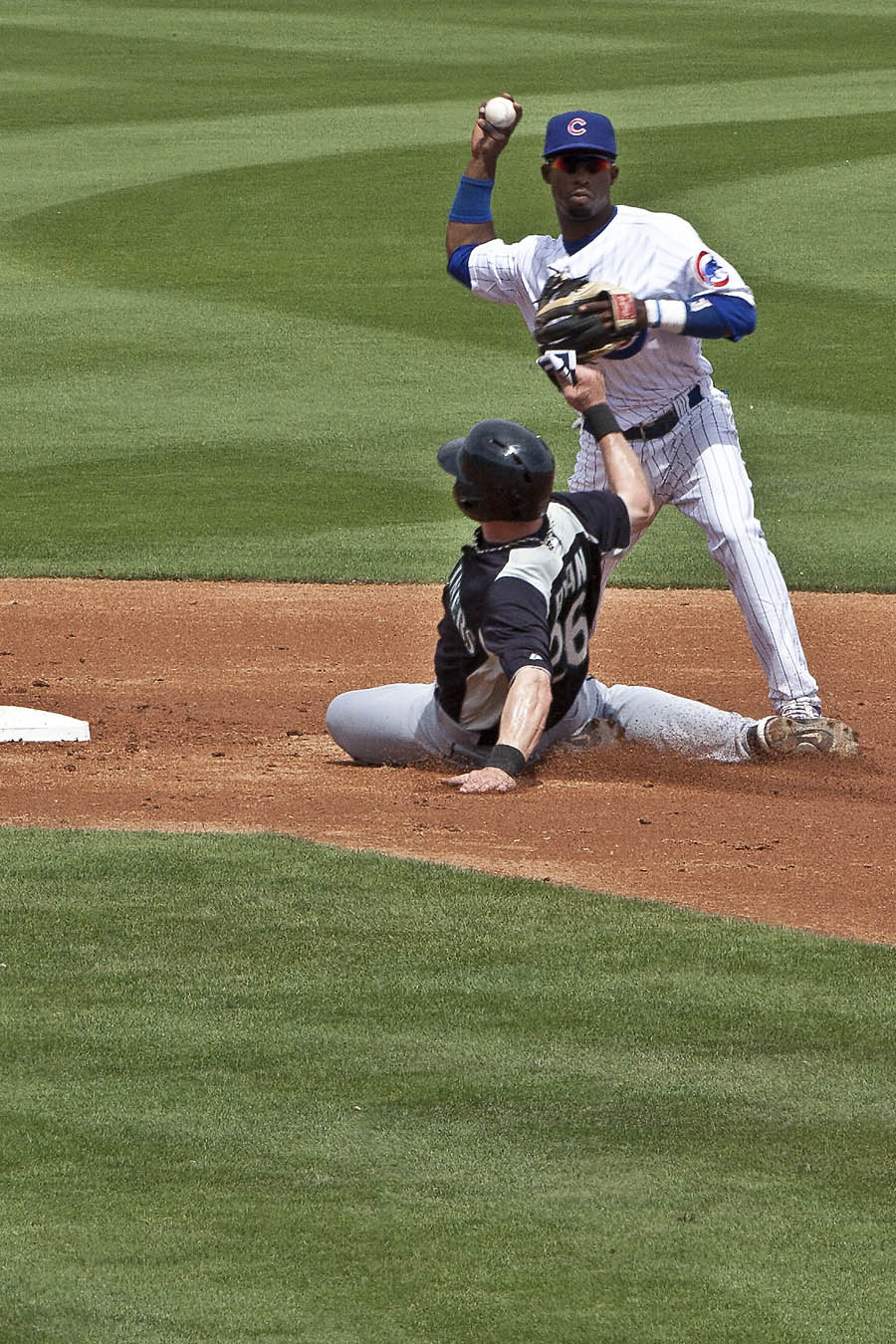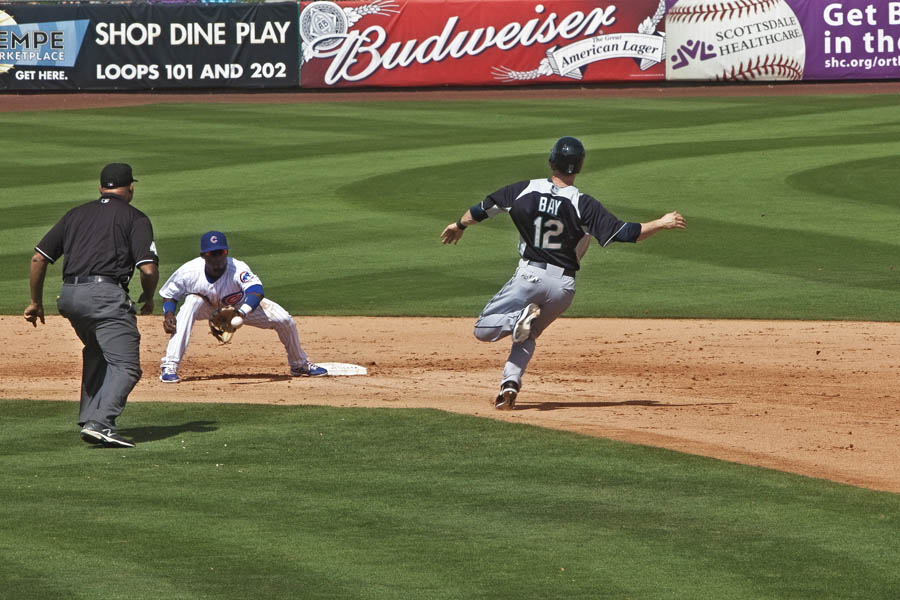Yesterday, we were treated to a baseball game, the last for the Chicago Cubs’ spring training in 2013. We traveled with longtime friends and new neighbours, Stephanie and Bill McAdam to HoHoKam Park in Mesa, AZ. Not only was this the final game of the 2013 Cactus League season for the Cubs, but also their last home game at HoHoKam Park, their 35th consecutive spring training in Mesa and their 17th at the HoHoKam Park/Fitch Park facilities. Unfortunately, the Cubs lost this historic game, 6-4 to the Seattle Mariners. The Cubs move to a new facility in Mesa for the 2014 Cactus League season.
I always enjoy a baseball game and spring training games in particular. The ballparks are much smaller than those used for the regular season and so you’re much closer to the action. I never miss the opportunity to get some good sports action, so I brought my camera to the game and I’m about to share with you some of the shots from yesterday’s outing.
The first picture is a favourite from yesterday and shows the baserunner attempting to break up a double play by taking out the fielder. The baserunner is out and the fielder is in the process of releasing his throw to first base. He succeeded and completed the double play.

A second picture I particularly like is this shot of Jason Bay, a Canadian from Trail B.C. being retired on a force play at second base. My timing of this picture was pretty good; you can see the ball as it arrives in time to catch the runner.

I’ll let the remainder of today’s pictures speak for themselves; I’ve included them as a slideshow. Click on the right to advance; on the left to back up.
The key to sports action photography is shutter speed. The goal is to “freeze” the action, capturing rapid motion in a still photograph. Yesterday afternoon’s light was perfect, a bright, sunny day enabling me to capture the light quickly and achieve very fast shutter speeds. I set up the camera by putting it “shutter priority” mode. In this mode you choose the desired shutter speed (ie.the duration of the aperture being open) and the camera will select the required aperture size to achieve the correct exposure. I chose a “shutter speed” of 1/500 sec., fast enough to stop most of the action in its tracks. (You will observe some minor signs of movement, for example slight blurring of the ball which is moving much faster than anything else). I set the sensor sensitivity at ISO 400 to ensure I could get a relatively small aperture with a fast shutter speed. I was able to capture all shots between f14 and f18, allowing me good depth of field. You can see that the shots are in focus for the entire depth of the picture, from the subject I was targeting to the outfield bleachers. I could have decreased the ISO setting which would have increased the aperture to achieve the exposure. This would have reduced the depth of field, blurring the background. That is a perfectly satisfactory way to take the picture; I chose to keep everything in focus. With the camera set up for speed, the final challenge is to capture the action. Firstly, I set the camera’s focus points in servo mode. This enables the camera to remain in focus as you track a moving subject. I also set the shutter on continuous shooting, enabling me to take rapid fire, successive shots by simply holding the shutter button down. I guess it’s a little like duck hunting!

